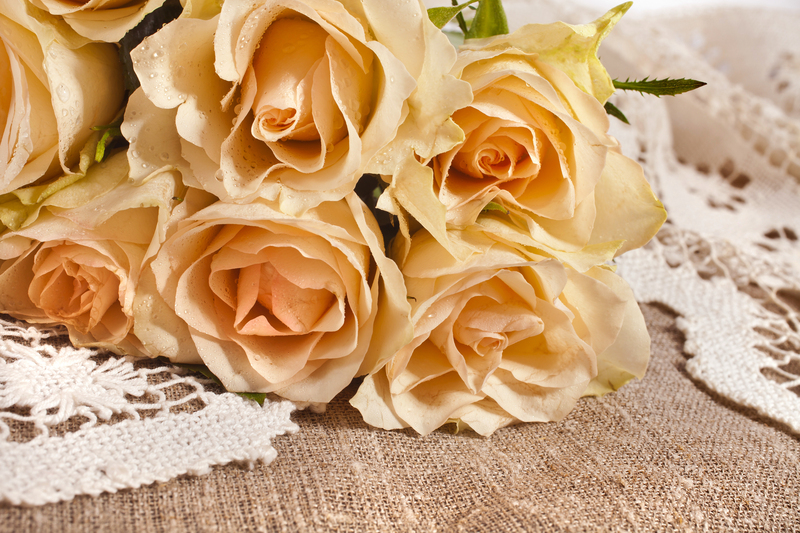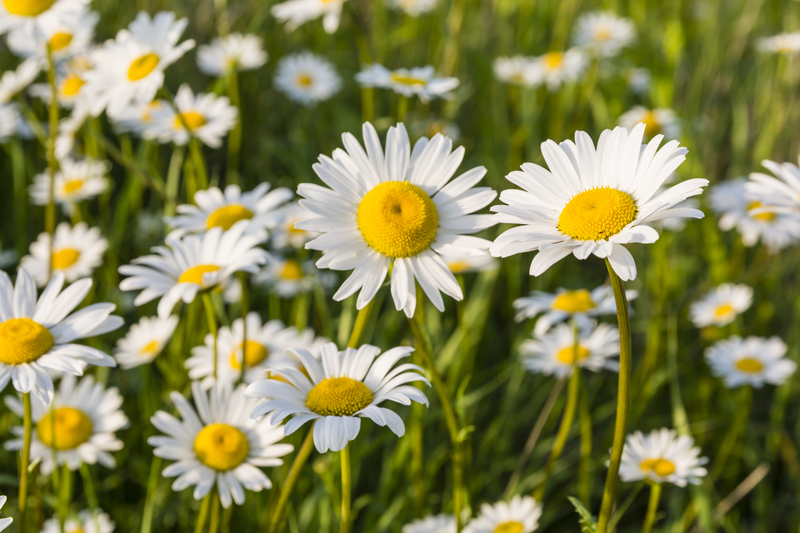Harness Wind for a Sustainable Garden Setup
Posted on 04/09/2025
Harness Wind for a Sustainable Garden Setup
Harnessing wind in your backyard can revolutionize how you cultivate a sustainable garden setup. Wind, an abundant and renewable resource, can support your garden with energy, pollination, pest control, and more. By understanding and utilizing the power of wind, gardeners can create greener, more self-sufficient landscapes. This comprehensive guide explores different methods and benefits of using wind for a sustainable garden, offering practical tips and innovative ideas for amateurs and experienced gardeners alike.
Why Utilize Wind Power in the Garden?
Wind is often overlooked in garden planning, yet it offers a wealth of sustainable benefits. Integrating wind energy and airflow principles into your garden can:
- Reduce reliance on conventional energy sources
- Support healthy plant growth and pollination
- Minimize pest infestations and diseases
- Encourage biodiversity
- Lower environmental impact
- Enhance microclimate control
Understanding Garden Wind Dynamics
Before you harness wind efficiently, it's essential to read your garden's airflow. Wind patterns can vary greatly depending on local topography, vegetation, and built structures. Consider these key aspects:
- Prevailing wind direction: Identify the most common wind direction on your property to optimize the placement of wind-powered features.
- Wind speed: Too much wind can damage plants, while gentle breezes can aid pollination and ventilation.
- Natural windbreaks: Trees, hedges, fences, or buildings will influence airflow and can be used strategically for protection or channelling wind.
Mapping out these site-specific factors will help you create a garden truly optimized for wind energy and sustainability.

Harnessing Wind Energy for Garden Sustainability
One of the most direct ways to harness wind in your garden is by installing a small wind turbine. Let's break down the steps, benefits, and tips for harnessing wind power directly.
Choosing the Right Wind Turbine for Your Garden
Residential garden turbines are available in various sizes and designs, making it easier than ever to generate clean, renewable electricity locally. Important considerations include:
- Output capacity: Consider your garden's electricity needs and local average wind speeds. Small turbines can provide power for lighting, water pumps, or other low-energy devices.
- Mounting location: Place turbines in open areas away from tall buildings or trees for optimal wind access.
- Noisiness and aesthetics: Modern designs are quieter and visually unobtrusive, blending into landscaped areas.
- Local regulations: Always check local zoning rules before installing wind turbines.
Applications of Wind Energy in the Garden
- Powering irrigation systems: Use wind-generated electricity to run water pumps or drip irrigation, making watering eco-friendly and affordable.
- Lighting pathways and greenhouses: Wind energy can supply LED garden lights or illuminate greenhouse interiors efficiently.
- Operating garden gadgets: From charging small garden robots to compost tumblers, wind can support various low-consumption devices.
- Ventilating greenhouses: Wind-powered fans maintain optimal air circulation in greenhouses, combating mold and pests.
Integrating a small wind turbine into your backyard not only reduces reliance on the grid but also demonstrates a commitment to green gardening practices.
Enhancing Garden Health by Managing Windflow
Wind isn't just an energy source--it also plays a vital role in plant health, microclimate management, and garden productivity. Let's look at how you can shape wind patterns to benefit plants and biodiversity.
Windbreaks and Shelterbelts in Sustainable Gardens
Excessive wind can strip moisture from soil and damage crops. Establishing natural windbreaks is a tried-and-true permaculture technique for creating a balanced, wind-resilient garden.
- Strategic tree planting: Rows of dense trees and shrubs slow wind and protect delicate plants, reducing transpiration and preventing soil erosion.
- Lattice fences and screens: Semi-permeable barriers diffuse strong gusts better than solid walls, creating gentle breezes inside your garden.
- Living hedgerows: Mixed hedges of native species offer habitat for wildlife and buffer your crops from extreme weather.
Well-placed windbreaks not only protect your garden but also foster a microclimate conducive to higher yields and less disease pressure.
Channeling Wind for Pollination and Pest Management
Harnessing wind for more than just energy is possible! Wind-activated features and airflow management assist with key garden functions:
- Aiding pollination: Some crops, such as corn and carrots, rely on wind pollination. Open, breezy spaces ensure pollen is well distributed.
- Reducing pests: Good air circulation discourages fungal diseases and deters flying pests.
- Self-seeding and natural propagation: Letting wind scatter seeds promotes a more diverse and self-sustaining plant community.
Creative Wind-powered Garden Features
For gardeners interested in innovative, sustainable design, wind power can drive more than just turbines.
Wind-powered Water Features
- Windmills: Traditional and modern windmills can pump water for small fountains or irrigation ponds--no electricity required.
- Aerators: Wind-driven aerators keep pond water oxygenated and healthy for fish and plants.
Garden Art and Soundscapes
- Wind chimes and sculptures: Kinetic art pieces add movement, beauty, and calming sounds, enhancing the sensory appeal of your outdoor space.
- Moving trellises or scare devices: Motion-powered systems can help deter birds and pests without chemicals.
Composting Innovation
- Wind-powered compost turners: Small vanes or sails rotate compost bins using wind, effortlessly increasing aeration.
DIY Projects to Harness Wind for Sustainability
Are you ready to start harnessing wind in your sustainable garden setup? Consider these practical, budget-friendly DIY solutions any gardener can implement:
- Build a mini wind turbine: Use kits or online tutorials to construct a simple turbine to charge garden gadgets or lighting.
- Create wind-activated pollinator turbines: Place lightweight spinners near fruit trees or crops to enhance pollination on breezy days.
- Install DIY windbreaks: Upcycle garden pallets, bamboo, or woven sticks to create functional and beautiful wind barriers.
- Make wind-driven rainwater collectors: Combine wind power with harvesting devices to maximize water efficiency in your sustainable garden design.
Best Plants for Windy Gardens
Some plants thrive with gentle winds; others need extra protection. Choose varieties well-suited for your unique site conditions:
- Wind-tolerant grasses: Miscanthus, switchgrass, or feather reed grass add beauty and resilience.
- Native shrubs: Hardy species like viburnum, bayberry, or hawthorn make excellent living windbreaks.
- Salt-tolerant coastal plants: Sea thrift, lavender, and Russian sage thrive in windy, exposed conditions.
Tip: Grow low-growing ground covers between taller plants to anchor the soil and reduce wind desiccation.
Maximizing Energy Savings and Ecosystem Health
A sustainable garden setup using wind is about balance. While harnessing wind for energy and ecosystem services, ensure you monitor impacts on biodiversity and microclimate.
- Combine solar and wind: Hybrid renewable energy systems can maximize your garden's output year-round.
- Monitor wildlife habitat: Keep wind turbines or large kinetic sculptures away from bird nesting zones to protect local fauna.
- Adapt your layout: Remain open to seasonal adjustments as plantings mature and wind patterns shift.
Challenges & Smart Solutions When Harnessing Wind
Making the most of wind in your sustainable garden setup entails understanding its challenges:
- Overexposure: Shield young or fragile plants from frequent strong gusts using temporary netting, cloches, or mulch mounds.
- Noise management: Choose modern, low-noise turbines and place wind-activated features at a comfortable distance from living areas.
- Maintenance: Regularly inspect windborne equipment for wear, especially after storms or high winds.
Smart planning and adaptive management are key to sustaining benefits and minimizing negative impacts.

Case Studies: Real-Life Wind Harnessing Garden Solutions
Gardeners around the world are using wind in creative ways:
- Backyard wind energy in the UK: Allotment gardeners use micro-turbines to run rainwater pumps, powering irrigation without ever needing grid electricity.
- American prairie permaculture: Tallgrass prairie buffers serve as windbreaks and wildlife corridors, reducing soil erosion and boosting pollinator populations.
- Dutch garden windmills: Classic Dutch gardens use decorative windmills to aerate ornamental ponds and drive charming kinetic sculptures.
The Future of Sustainable Gardening with Wind Power
As technology and environmental awareness grow, more garden enthusiasts will discover the beauty and utility of wind. By adopting wind-powered energy, optimizing microclimates, and implementing creative wind-driven features, gardens can become true examples of resilience and sustainability. The synergy of wind, plants, and renewable energy unlocks eco-friendly gardening at its best.
Conclusion: Create Your Wind-Harnessing Sustainable Garden
Embrace the wind! With thoughtful planning, both active and passive wind features can deeply enrich your garden's health, reduce costs, and make your green space a model of environmental stewardship. Start with small steps--observe your garden's breezes, experiment with simple wind devices, plant hardy species, and enjoy the journey to a sustainable garden setup that breathes with the wind.
Ready to harness wind and transform your garden? Explore, experiment, and watch your sustainable oasis flourish!

